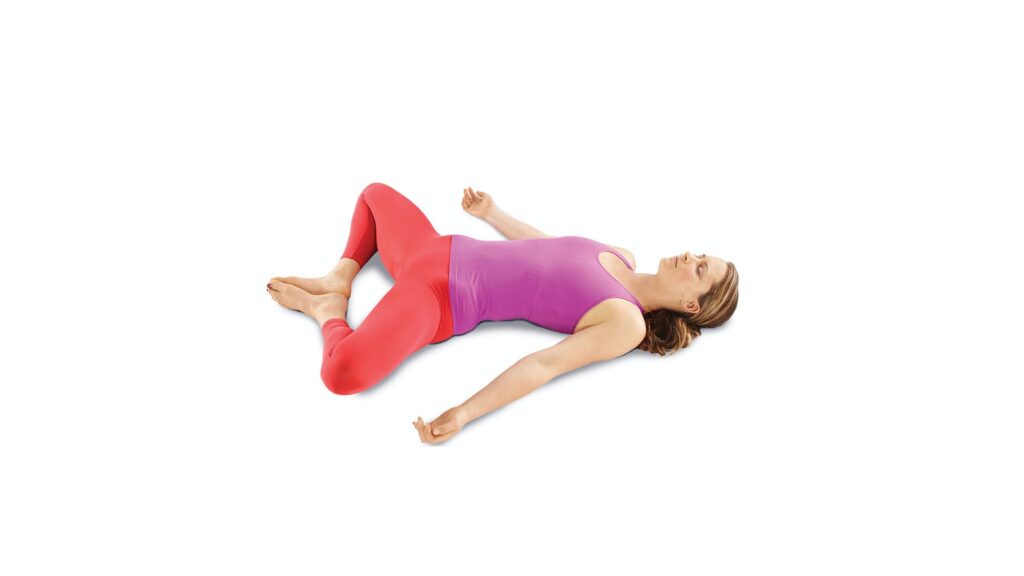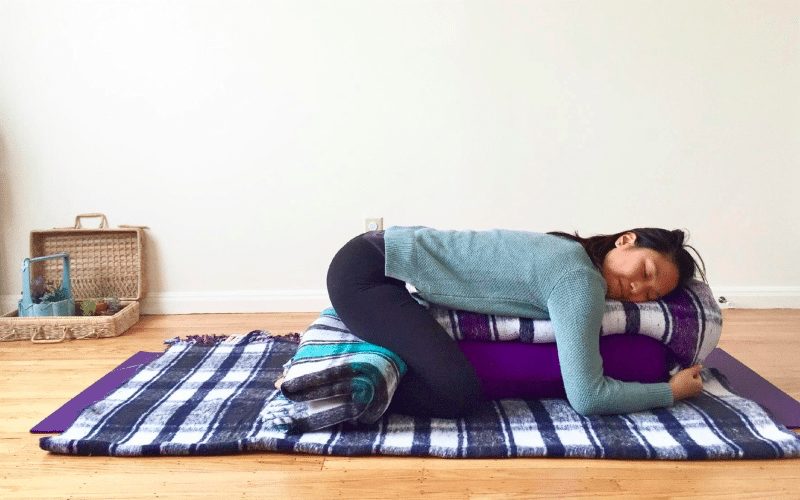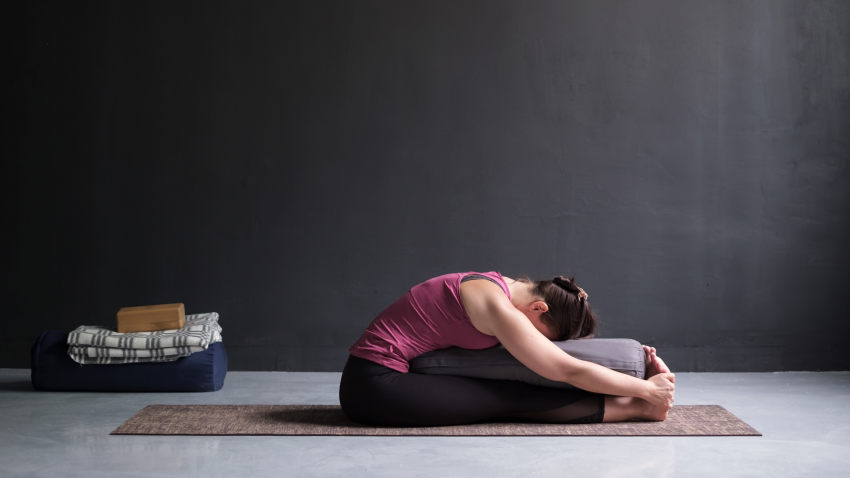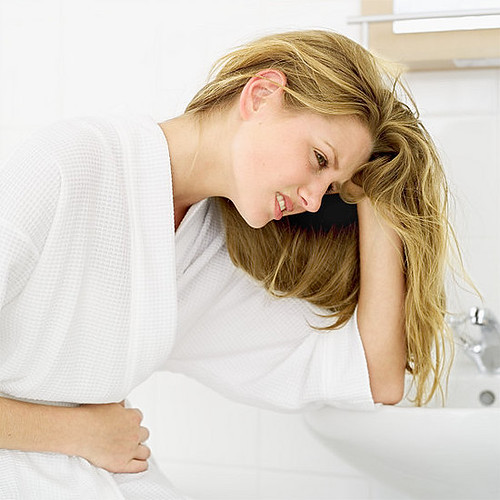Menstruation is a perfect time to allow the body to slow down and rest. Through resting in restorative yoga, many symptoms of PMS such as abdominal cramping, moodiness and lower back pain can be lessened or even eliminated.
When the body rests in restorative yoga, the relaxation response is activated, which increases efficiency in all systems of the body, leveling out hormone levels and improving over all wellness. The following three poses are particularly nurturing to practice at this time.
Supta Baddha Konasana (Supported Bound Angle Pose)

To move into supta baddha konasana, gather one bolster, one blanket, one strap and two blocks. Place the folded blanket at one end of the bolster; this will serve as a pillow to support the head and neck. Sit at the skinny end of the bolster facing away from it with the soles of the feet together, loop the strap over the head, between the legs and over the feet and tighten the strap until it is snug but not pulling.
Make sure the strap is not pressing into the lower back by moving the it down to just above the tailbone. Lie back on the bolster and adjust the blanket to comfortably support the head and neck. Place blocks under the knees for support. Stay in this pose for up to 20 minutes with the eyes closed. Come out of the pose slowly, bringing the knees together, rolling to one side and then gently pressing up to seated.
Resting in supta baddha konasana allows the belly to soften and relax, which reduces abdominal cramping and allows the body to release tension. Using the bolster for support also brings some space to the lower back, allowing the muscles of the lower back to release and lower back pain to melt away. Shoulder tension is released by allowing the shoulders to release back towards the floor over the bolster.
Supported Child’s Pose

To move into supported child’s pose, only a bolster is needed. Come onto hands and knees over the bolster. Take the knees a little wider than the hips and the toes together and move the hips the heels, make a pillow with the hands and rest the head on the bolster. Rest in this pose up to five minutes. Use the hands to press the body back up to hands and knees, slowly coming out of the pose.
Supported child’s pose lengthens the lower back and can help ease aches through the lower back. The support of the bolster on the belly helps it relax, making more room for the breath to move through the body which helps decrease feelings of depression or moodiness.
Supported Pachimottanasana (Forward Fold)

For supported pachimottanasana, a bolster and blanket (or possibly more blankets, depending on hamstring flexibility) will be needed. Sit with the legs extended straight out in front of the body and place the bolster and at least one folded blanket on the legs from hips to toes. Fold forward over the bolster and blanket(s) so the props support the entire torso.
Build up the props enough (by adding more blankets if needed) so there is no strain in the hamstrings when folding forward. Hold this pose anywhere from two to five minutes. To release the pose slowly press up to seated and move the props out of the way.
Supported pachimottanasana lengthens the entire back of the body, from the Achilles tendon at the heels to the back of the head. Releasing the hamstrings brings even more release to the lower back. The support of the bolster to the front of the body allows for the belly to soften which can help to alleviate cramping.
